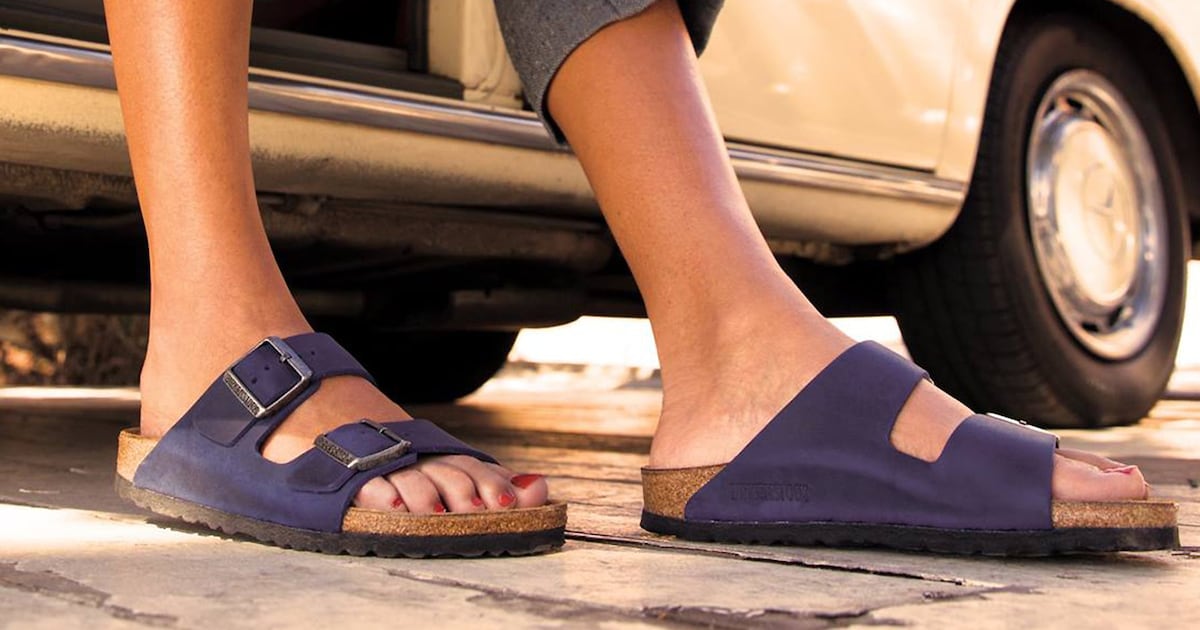
Birkenstock Holding Plc reported faster sales of its high-end sandals and clogs while keeping its annual financial targets unchanged, as the German shoe company seeks to convince investors that it can stay fashionable.
Sales rose 19 percent to €362 million ($378 million) in the three months through December from a year earlier, with momentum especially strong in Asia and for closed-toed footwear, Birkenstock said Thursday. That exceeded analysts’ average estimate of €356 million. The company affirmed its 2025 forecast for sales to grow as much as 17 percent on a constant currency basis.
Still, the company’s shares fell by about 5 percent in premarket trading in New York, with analysts noting that Birkenstock didn’t raise its outlook and that direct-to-consumer sales in the quarter rose less than expected.
Though the winter months are historically Birkenstock’s slowest season, the company is benefiting from a growing range of closed-toe sneakers, boots, clogs and slippers, which often have higher price tags than its classic sandals. They sold especially well in the holiday season, making up more than half of Birkenstock’s business in both the Americas and EMEA regions, it said.
Birkenstock’s business with retail partners was surprisingly robust, but a 10 percent rise in direct-to-consumer revenue — online and through the company’s retail outlets — in constant currency terms was below the 14 percent expected by analysts. That could cause some investors to worry Birkenstock may be losing brand momentum, Edouard Aubin, an analyst at Morgan Stanley, said in a note.
Birkenstock said in the fall that many younger consumers are returning to shopping centres in the wake of the pandemic, boosting its business with retail partners and pulling some demand away from its e-commerce channel.
The company is expanding production capacity in Germany and Portugal, and catering to previously untapped markets like China and India as chief executive officer Oliver Reichert tries to sustain its decade-long boom.
Growth was particularly strong in the Asia-Pacific region, where sales surged 47 percent to €47 million in the quarter. The company has recently opened several new company-owned stores in the region, along with other Birkenstock-branded locations owned by partners.
The company is also expanding its offering of cheaper plastic footwear, which is bringing in new customers and convincing long-time fans to pick up extra pairs that are geared toward the beach and humid climates.
Adjusted earnings before interest, taxes, depreciation and amortisation rose 25 percent to €102 million, the company said, higher than analyst estimates.
Birkenstock also affirmed its other 2025 earnings targets related to profit margins. Many consumer companies are being careful with their forecasts given the uncertainty around trade tariffs and other geopolitical events. Reichert has repeatedly said he wants to be conservative with his financial forecasts.
Birkenstock shares are up about 19 percent since its initial public offering in New York in October 2023, trailing the S&P 500 Index. The stock has a history of being somewhat volatile, especially on days it reports earnings.
By Tim Loh
Learn more:
Birkenstock Sues ‘Copycat’ Rivals Claiming Its Sandals Are Applied Art
The company faces a legal battle in Germany to have its iconic cork-soled sandals recognised as “works of applied art” and protected by copyright law after suing competitors for alleged imitation.

